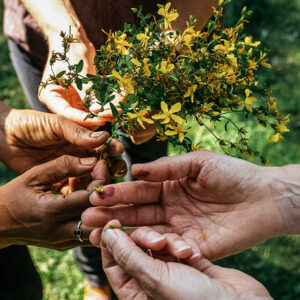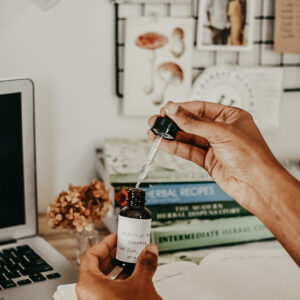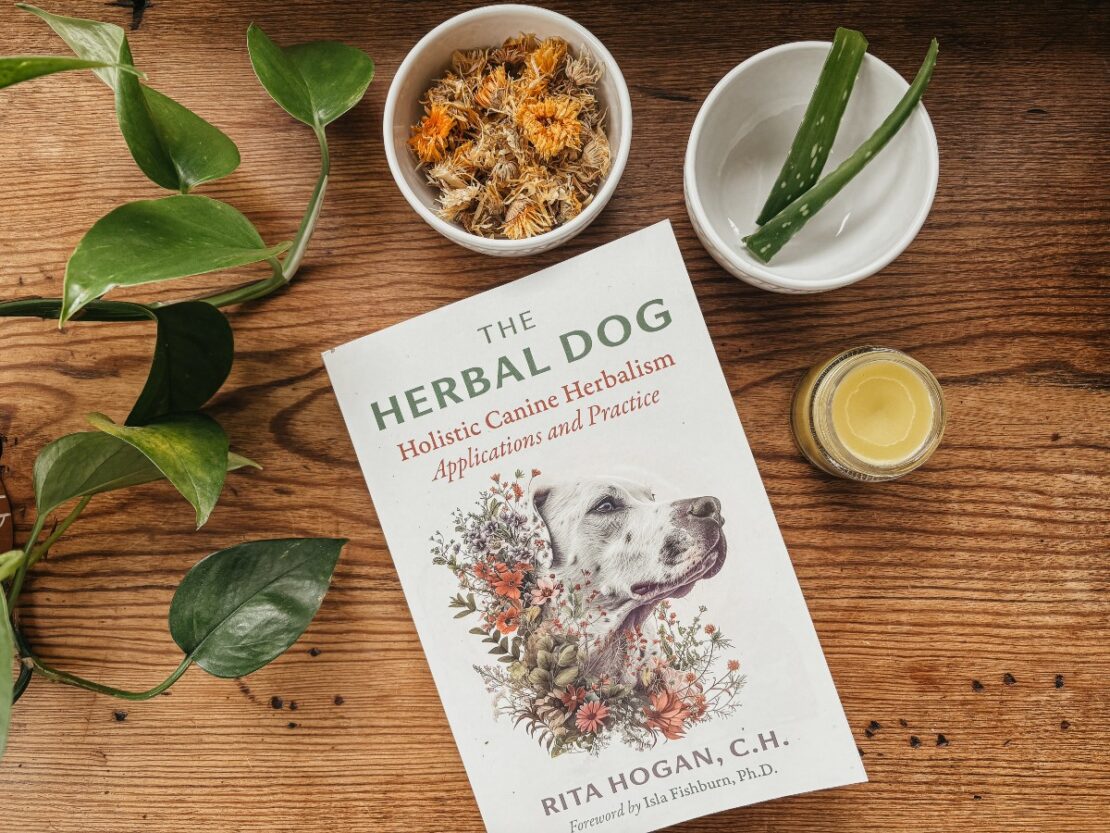
Herbs for Dogs: Calendula and Other Herbs for Canine Skin Health
In The Herbal Dog: Holistic Canine Herbalism: Applications and Practice, Rita Hogan, C.H., highlights the many different evidence-based herbs for dogs factors that contribute to canine wellness. Incorporating herbs, diet, lifestyle tips, energetic considerations, and a truly holistic viewpoint of animal as mind, body, and spirit, Rita approaches skin health from the inside out. A seasoned clinician with over two decades of work as a canine herbalist, Rita provides insights from her encounters with dogs of all breeds and sizes.
In this mini-excerpt below, you’ll learn valuable tips on herbs for dogs and how to support your dog’s health on the skin and within. Pups plagued with itching, biting, scratching, and licking often have much more going on beneath the surface. Rita Hogan identifies how herbs like skin-soothing calendula (Calendula officinalis) and nutritional supplements like digestive enzymes and probiotics can help ease and alleviate irritation. You can find the full book excerpt and a video from Rita on how to use herbs for dogs to support dog “itchies and scratchies”—including full herbal monographs for skin-restoring calendula and yarrow—in The Herbarium!
The Herbal Dog by Rita Hogan, C.H., Foreword by Isla Fishburn, Ph.D. © 2025 Healing Arts Press. Printed with permission from the publisher Inner Traditions International.
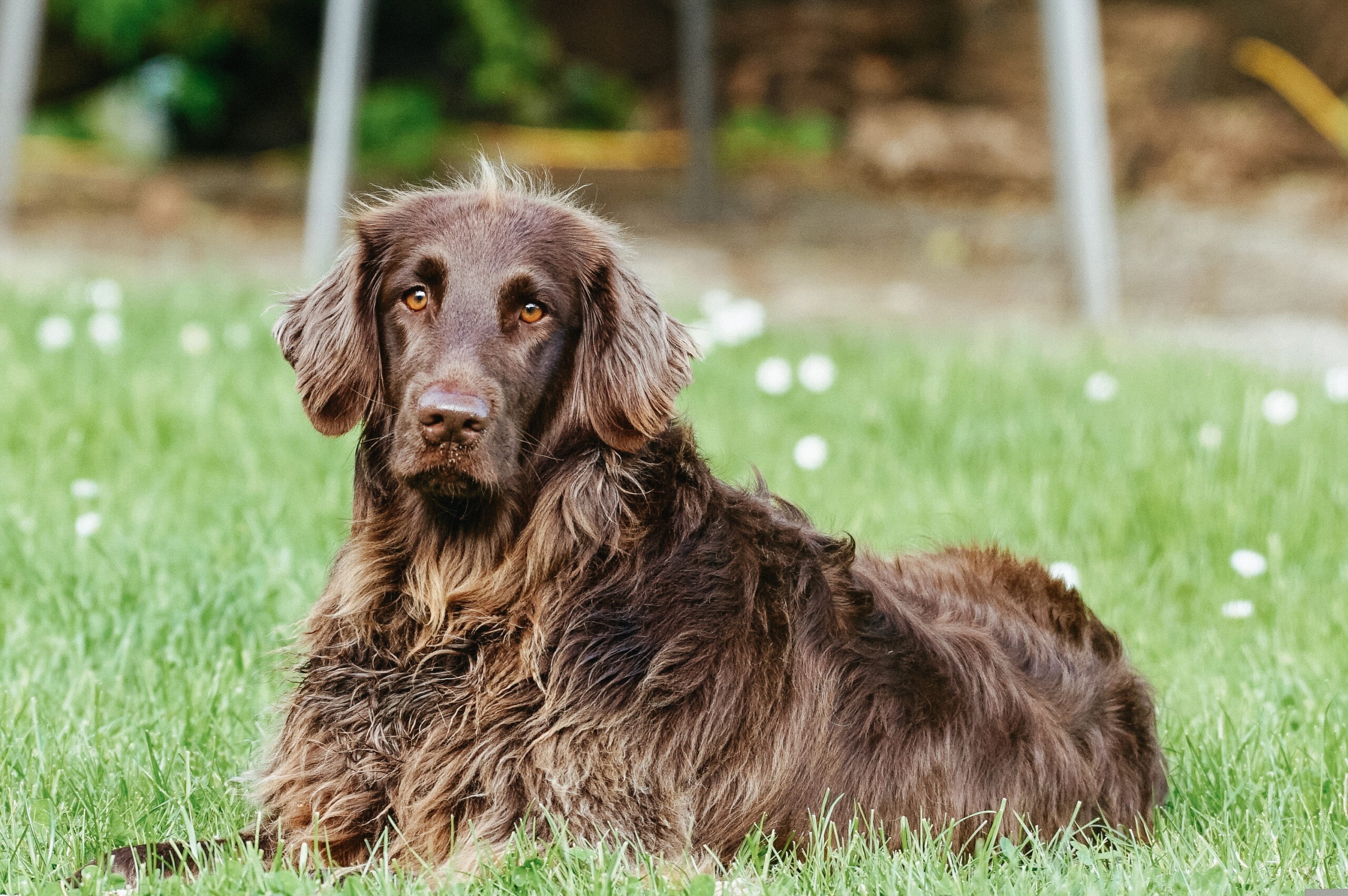
The Skin
The skin is your dog’s largest organ and is part of the integumentary system, which includes the anal glands, ear flaps, fur, lymph, sweat glands, and tail. It provides an elemental barrier holding muscles, internal organs, bones, and connective tissues inside the body, giving your dog its shape. The skin is composed of three layers: the epidermis, dermis, and hypodermis. It makes up an estimated 12 to 24 percent of your dog’s weight23 and has a variable pH of approximately 6.2 to 7.4, depending on your dog’s breed, color, and stress levels. Nutritionally, the skin stores electrolytes, fats, proteins, and vitamins. It prevents dehydration, regulates temperature, and excretes water, salt, and organic wastes. Ninety-five percent of a dog’s skin is covered in fur (give or take some hairless breeds).
Strategies for Healthy Skin
When discussing skin concerns, unless a dog has an acute issue like an abrasion, bite, or wound, the underlying problem is almost always a chronic condition. I can’t emphasize enough that healing takes time; the body doesn’t work on hyperdrive. Trying to get the body to heal too quickly isn’t how it works, and pushing it only leads to frustration for everyone involved. This is why pharmaceuticals have so many side effects; they force the body into submission and don’t support the innate healing response.
To begin, ensure that your dog’s diet is a healthy one, with adequate protein, fats, minerals, vitamins, and trace elements. Pay special attention to vitamins A and E, the B-complex vitamins, amino acids, essential fatty acids, and zinc. Poor absorption of nutrients can be a factor in skin conditions, so the gut must be assessed and healed if necessary.
Thyroid imbalances are epidemic in American dogs and often go undiagnosed.25 You’ll see symptoms like thinning hair, thickened skin, and poor muscle tone. Always request a full-panel thyroid test when you suspect a chronic skin condition.
Supporting the liver and lymphatic system helps clear skin toxins because the liver is directly connected to many skin diseases. With environmental pollutants and the state of our food supply, our dogs are bombarded by toxins. The heightened toxic load can be the reason behind many chronic skin conditions.
Herbs for the Skin
The selection of herbs that are helpful for the skin is vast, but almost all of them support liver and elimination health. As you look through the monographs of healing plants in chapter 8, you’ll notice that many of them have liver and skin connections. When the liver pushes out to the skin, causing chronic skin eruptions, you can be assured that your dog’s elimination systems are congested.
Alteratives for the liver-skin connection make positive changes because they slowly open the elimination systems, gently stimulating detoxification. Most alteratives are cooling and draining through their cleansing action. If your dog is dry, be careful with alteratives and ensure that your dog gets proper hydration and healthy fats. Don’t give cooling alteratives to cool dogs that are moving toward cold. These dogs need warming nourishment and energetic focus before you begin looking at any detoxification. Again, herbs are individuals, and your goal is to match the herb to your individual dog. There isn’t a one-size-fits-all solution in holistic herbalism.
Herbs and fungi for the skin: alfalfa, aloe, ashwagandha, burdock root, calendula, chamomile, chickweed, cleavers, dandelion root, echinacea, horsetail (phytoembryonic), milk thistle seed, nettle, parsley, plantain, poria mushroom, rose hips, rosemary, tremella mushroom, turkey tail mushroom, turmeric, yarrow, yellow dock
Hot Spots
Common energetic pattern: damp heat
Most hot spots stem from chronic imbalances within the body, especially liver imbalances, food sensitivities, or muscular skeletal pain and tightness. Flea and other bug bites can cause hot spots, too, but this is less often the case. Hot spots that appear suddenly are a sign that the body is eliminating toxins through the skin or an environmental allergen has overwhelmed the immune system. The most common places you’ll see hot spots is on the side of your dog’s face, the neck, the hind end, and the top of the tail.
Hot Spot Rinse
8 ounces boiled and cooled filtered water
15 drops echinacea tincture
10 drops crab apple flower essence
10 drops self-heal tincture
8 drops usnea tincture
Pinch of Himalayan salt
Calendula and Goldenseal Hot Spot Spray
Use this calendula and goldenseal spray for painful, dry, or healing hot spots. It’s ideal when your dog won’t let you touch their hot spot. Don’t add to any hot spot that has pus, as this spray will seal in infection.
1 cup filtered water
15 drops calendula tincture
15 drops goldenseal tincture
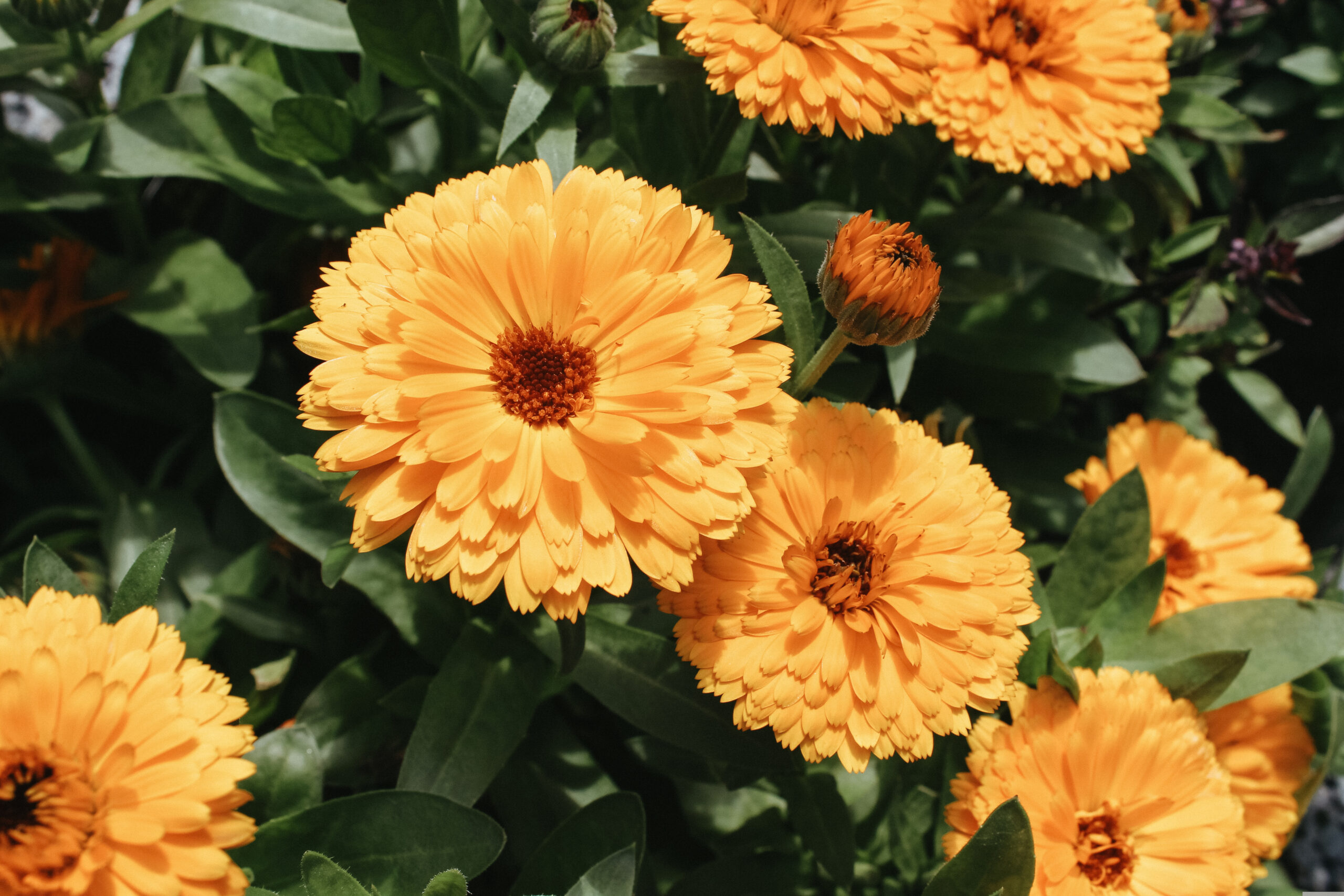
Calendula (Calendula officinalis)
Family: Asteraceae
Energetics: warm and dry
Energetic patterns indicating its use: coolness, cold, relaxation
Part used: flower with calyx
Long-term use: yes
Actions: alterative, anti-fungal, anti-inflammatory (gentle), antimicrobial, antiseptic, warming astringent, bitter, cholagogue, emollient, lymphatic, spasmodic, vulnerary
Constituents: antioxidants, calcium sulfate, carotenoids, chlorogenic acid, coumarins, flavonoids, flavonol glycosides, isoquercitrin, isorhamnetin, longispinogenin, lupeol, lutein, lycopene, mucilage, narcissin, neohesperidoside, phytosterols, polysaccharides, potassium chloride, quercetin, resin, rutin, saponins, sesquiterpenes, sterols, sulfate, triterpenes, tocopherols, volatile oils Nutrients: calcium, magnesium, phosphorus, potassium, sodium, vitamins A and C
Cofactors: abrasions, bacterial infections of the skin, bruises, burns, candida overgrowth, cat turd eating, cold stomach, conjunctivitis, cough, damp and cold to neutral energetics that worsen in cold or damp weather, demodectic mange, depletion, diarrhea, digestive inflammation, digestive upset, dry skin, ear infections, elevated liver enzymes, excessive antibiotic use, irritated eyes, fatigue, food intolerance, frailty, grief, gum disease, hepatitis, hot spots, IBD, impacted anal glands, itchy skin, leaky gut, lethargy, lingering infections, nausea and vomiting, respiratory conditions, sarcoptic mange, sensitive stomach, sepsis, sprains, sunburn, thinness, ulcers, warts, yeast
Flower essence: for depression, deficiency, lack of bonding, weak digestion, reactivity to stimulus or weather, stiffness or rigidity
Use for cats: yes
Skin: An excellent external wound healer (vulnerary), helping to prevent bacterial growth, reduce inflammation, and promote the healing of cells. Decreases swelling, discharge, and scarring from injuries like scrapes, burns, and abscesses. Makes an effective antiparasitic rinse for sarcoptic and demodectic mange. Mix with St. John’s wort in an infusion or salve to help heal and soothe a hot spot. Helps disperse candida and other fungal infections of the skin.

SEE THE VIDEO IN THE HERBARIUM!
Interested in learning more about herbs for dogs and how to use herbs to safely and effectively support the skin health of your balanced and beautiful canine? Members of The Herbarium can join canine herbalist Rita Hogan in a video as she breaks down some considerations for skin health from a holistic perspective. You’ll find this invaluable video in The Herbarium, along with the excerpt of The Herbal Dog.
Interested but not yet a member of The Herbarium? Get access today with quarterly or annual membership!
The Herbarium is our ever-expanding, illuminating virtual collection of over 200 (and counting!) searchable monographs, unique intensive short courses on focused topics, and numerous informative articles, videos, ebooks, podcasts, and helpful downloadable resources. The Herbarium is crafted for herbalists to help you learn and grow in your herbalism journey!
Learn more and sign up for The Herbarium here.
Get a copy of Rita’s book The Herbal Dog: Holistic Canine Herbalism: Applications and Practice, via Inner Traditions Publishing or via Amazon. Enjoy learning more about herbs for dogs!
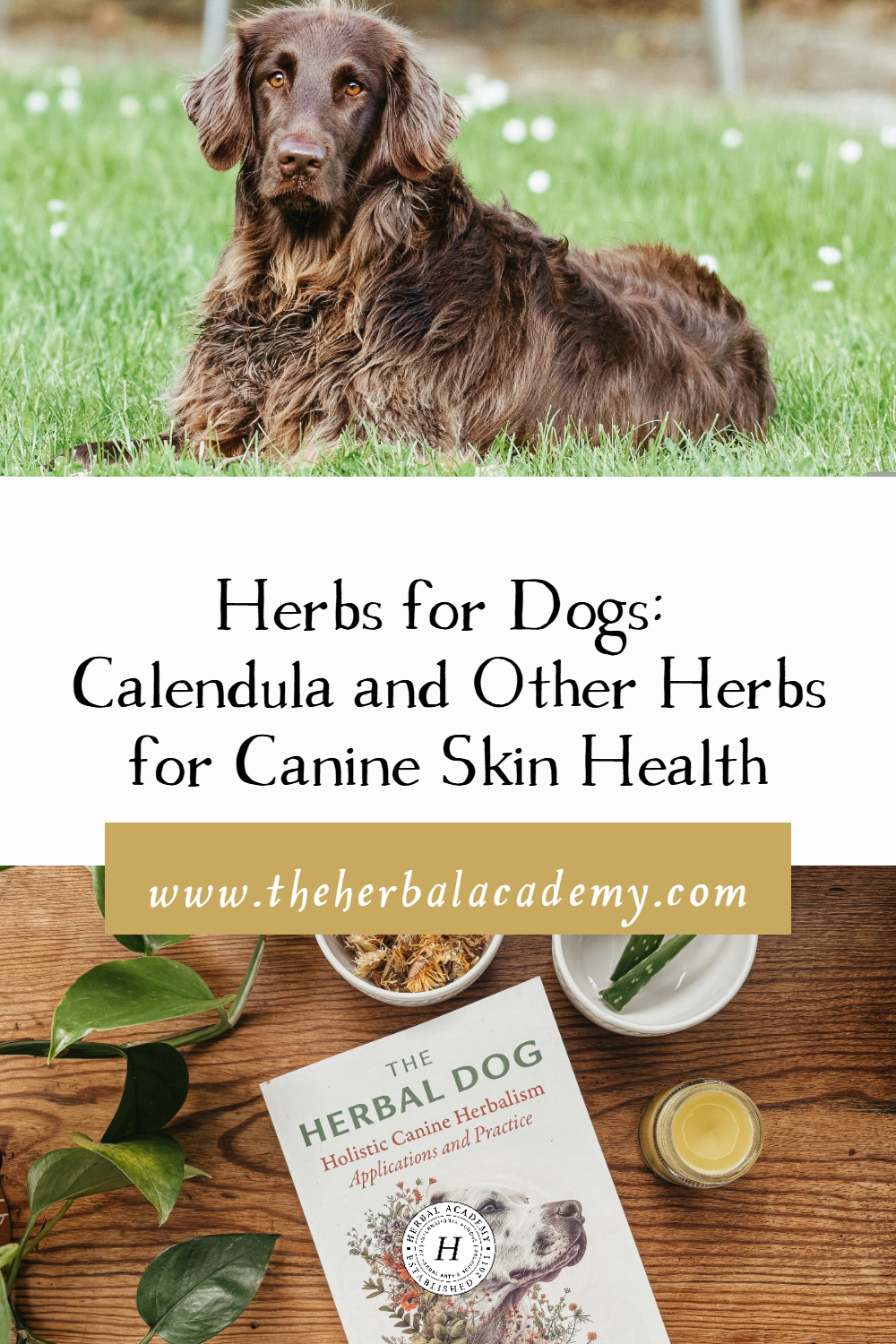

Rita Hogan is a canine herbalist with 25 years of experience specializing in herbs for dogs and holistic Western herbalism with a specific focus on canine health. Rita is an educator, writer, formulator, grower and medicine maker using a combination of diet, flower essences, herbs and phytoembryonic therapies. Rita lives in Olympia, Washington with her two pugs and three-legged cat. Connect with Rita @canineherbalist, in her private facebook group facebook.com/groups/canineherbalist/ or on her website, canineherbalist.com.


